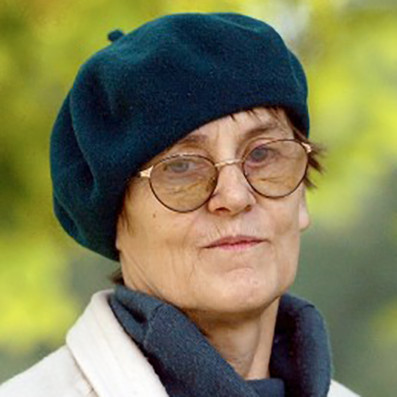Sontata for Violin and Piano No.2
Dedicated to Jānis Bulavs
I. MODERATO
II. TEMPO DI MENUETTO (ALLEGRO MODERATO) – RUBATO
III. AGITATO - ALLEGRO MOLTO
When I say to Maija Einfelde that I consider Sonata No. 2 to be a whole, rather than a cycle in three movements, the composer responds broadly: “I am not one of those authors, who plans out and calculates everything. I struggle with the beginning and I do not know how I will finish. I am reminded of what [composer Arthur] Honegger said – the composer is like a builder, who is building a stairway to heaven and does not know if he will reach the top or collapse with the stairway back to earth. Writers also are known to say that they do not know what the heroes will due while the book is being written.”Sonata No. 2 has a protagonist in literature. In the early spring of 1985, the composer, along with the actress Ārija Stūrniece, perform together: Maija improvises, Ārija reads the poetry of Knuts Skujenieks and stories by Aleksandrs Čaks (1901–1950). One of the stories – “Kļavas lapa” (Maple Leaf, 1938) – inspires Maija so much that the sketches from the improvisation are formed into a sonata.
The beginning of the work corresponds to the beginning of a story: “All the windows of the world were pulled open, and the wind howled in the open rooms, fluttering and pulling everything along. || In the courtyard of the 31st large building, the wind fell into an old maple like a crazed cat. It pulled, ripped the leaves to all sides, then, mindlessly howling, jumped into the room and disappeared, leaving behind a trembling air, flowers glowing in the sun and uneasiness.”The first chord of the sonata – like a window thrown open.In the first movement of the sonata, the composer references another paragraph from the story: “Above the sky was clear, like the clear spring water, to which a bright blueness is added. Were it slightly closer, the women of the city would pour it into buckets to rinse laundry. || The clouds hurry. They were like large drifts of snow, loaded into heavy, unseen ships, which swam against eternity. ”On one summer day, a maple leaf comes into the hands of a year and a half old yard keeper’s son. Green and crisp – an unseen miracle, the best toy.The second movement of the sonata is a minuet – the only example of this genre in Maija’s creative work. Baiba Jaunslaviete notes a parallel with the minuet of Ivanovs’ 20th symphony (his final completed symphony), which is Ivanovs’ nostalgic reminiscence of his study days.In the autumn, the boy catches a cold and dies. Čaks writes: “Suddenly, a gust of wind blows open the doors, and it seemed that, along with the cool, damp air, an invisible maple leaf flew into the room, perhaps the same one that the boy had held tight to his breast. || The leaf landed on the dead boy’s forehead and covered his eyes with its greenness. || Late at night, the boy’s washed shirt was put on two blocks of wood in the shed. The chips of wood were damp and got stuck to shoes. || After midnight, the boy’s small body had fully cooled and became white. A bitter dampness collected on his chin, in the corners of the shed, but the boy’s soul swam towards Heaven on the green leaf. ”The sonata concludes.“ And, at the conclusion of each movement, the clock of the soul – tick-tock.”
Orests Silabriedis /LMIC 129/SKANi "Maija EInfelde: Violin sonatas"/
Premiered October 4th, 1985 in the Latvian Academy of Music • Jānis Bulavs, Jānis Rinkulis

